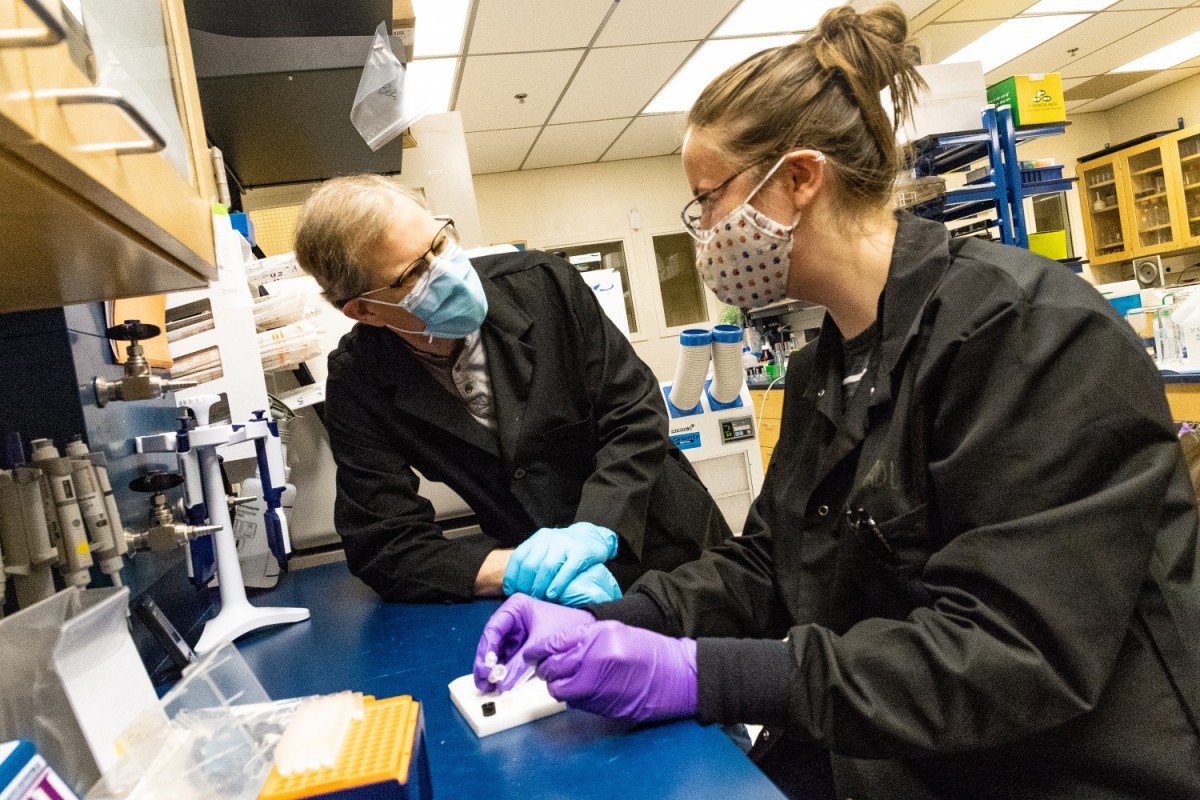The word “army” typically conjures up images of ground warfare. As the military’s DARPA program proves, some key innovations we enjoy today have emerged from military efforts. Here is an example of the U.S. Army aiming to deliver a way to use gene editing to convert waste materials into something useful.
As part of an educational partnership with Gettysburg College, researchers with the U.S. Combat Capabilities Development Command, known as DEVCOM, Army Research Laboratory are now a step closer to engineering filamentous fungi, organisms similar to the fuzzy mold that grows on bread, to grow useful materials, chemicals, or nutritious foods starting from indigenous plants or even plastic trash as inputs.
The team trained for nearly a week with Dr. Steven James, an Associate Professor in Gettysburg College’s Biology Department, for highly-specialized instruction to better understand how to edit the DNA of these organisms.
“[DEVCOM] ARL is expanding our biotechnology and biosciences research portfolio to explore enabling sciences that lead to a number of warfighter resources from food to fuel and medicine to materials,” said Dr. Matthew Servinsky, a research biologist at the Army laboratory. “ARL is interested in producing chemicals, fuels, foods, and even building materials with fungi. Every piece of materiel that soldiers can make for themselves in the field is one less item the Army needs to transport to them. The logistics of supplying our troops are very challenging in many locations.”
This work is part of the laboratory’s Transformational Synthetic Biology for Military Environments essential research program, which supports the Army’s Synthetic Biology Priority Research Area.
“ARL’s partnership with Dr. James has allowed our fungal biotechnology team to rapidly master lab techniques specific to fungi, especially how to prepare them to take up the DNA molecules we custom design and assemble,” said Dr. Alex Tobias, a chemical engineer on the team at ARL. “This is how we edit the genomes of the fungi in order to endow them with new capabilities to convert a wider range of substrates into products of value to the Army.”
When it comes to experimental techniques, Tobias said there’s no substitute for in-person learning from an expert.
“You can read all the literature there is on a subject, but basic questions will remain unanswered until a teacher can point out exactly what you should be looking for on a plate, in a test tube, or under the microscope,” he said.
ARL bioengineer Dr. Jose Wippold, an expert in microfluidics, or miniaturized systems for performing measurements or manipulations on individual cells, also participated in James’ visit.
“The potential for applying microfluidics to fungal cells offers an exciting avenue of discovery to advance the field of fungal genetic engineering,” Wippold said.
The Army established an Educational Partnership Agreement with Gettysburg College in 2020 to facilitate collaboration between the two organizations. The team received feedback from James that he has also substantially benefited from the relationship.
Dr. Rebecca Renberg an ARL contractor, recently sequenced the genomes of four mutant fungal strains generated in James’ laboratory with defects in their ability to divide. This will allow James to identify additional genes involved in cell division in fungi and possibly in higher organisms as well.
The lab leverages strategic partnerships to enable the sharing of information, resources, personnel and expertise to affect an increased interest in and enhancement of STEM education, research and workforce development.
The other members of the laboratory team who trained and collaborated with James during the visit are biologist Dr. Randi Pullen and ORAU journeyman fellow Meaghan Adler, a recent graduate of Gettysburg College.
Image source: U.S. Army: Army journeyman fellow Meaghan Adler (right) explains a technique used in the laboratory that employs sound waves to “lyse” or break open cells to Dr. Steven James. This is the first step to purifying DNA or proteins inside. Fungal cells are particularly challenging to lyse compared with other microbes. (Neil Adams)

